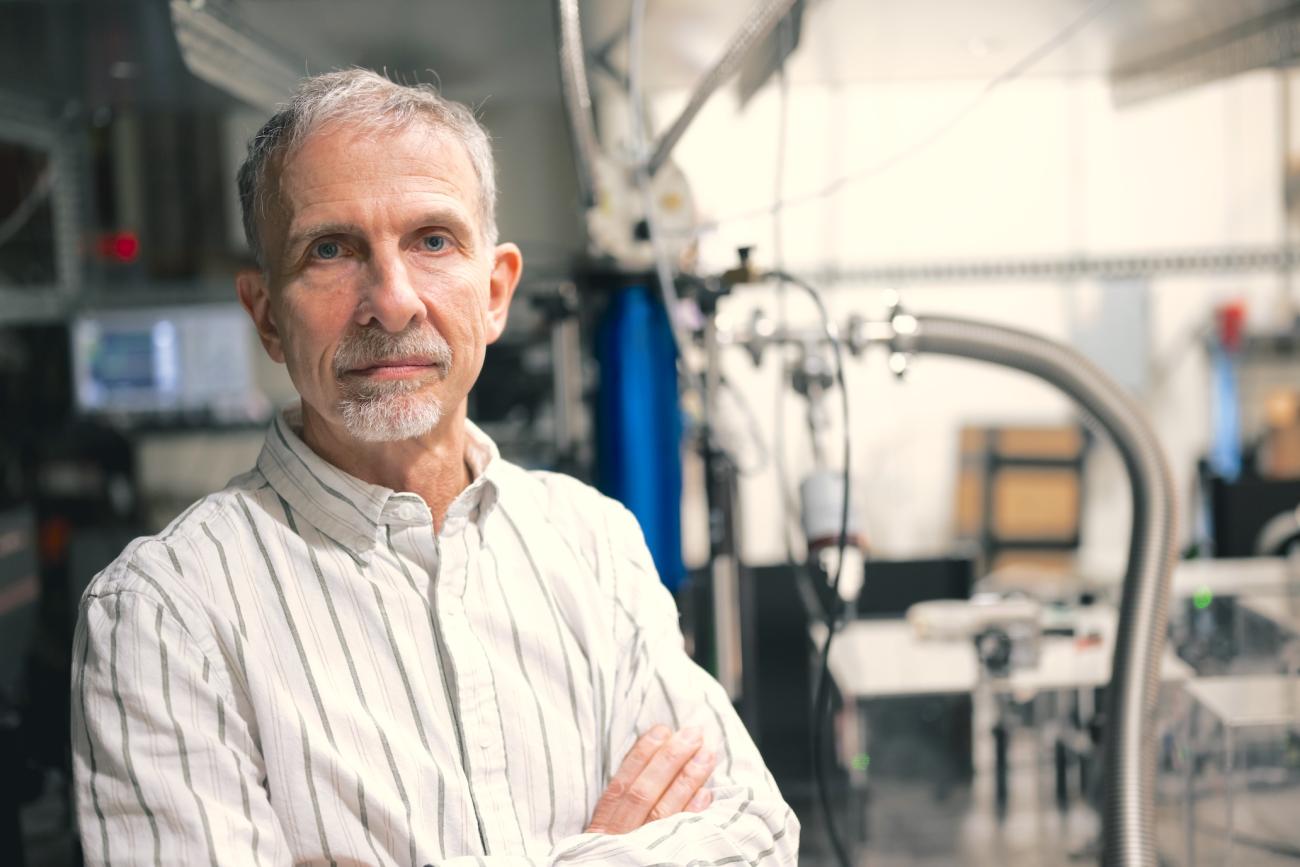The Dynamics of Excitons
Ivan Biaggio pursues groundbreaking research on quantum-entangled particles in organic crystals
Excitons, encountered in technologies like solar cells and TVs, are quasiparticles formed by an electron and a positively charged “hole,” moving together in a semiconductor. Created when an electron is excited to a higher energy state, excitons transfer energy without carrying a net charge. While their behavior in traditional semiconductors is well understood, excitons act differently in organic semiconductors. Research by condensed matter physicist Ivan Biaggio focuses on understanding the mechanisms behind exciton dynamics, quantum entanglement, and dissociation in organic molecular crystals.
In organic materials, excitons must first move through the material to then dissociate and generate a usable current. Biaggio’s lab uses lasers to excite these particles and observes their quantum-level interactions. They track exciton behavior via short laser pulses and fluorescence, analyzing "quantum beats" to study complex processes like singlet fission, triplet transport, and triplet fusion. Singlet fission splits an initial excitation (with spin 0, called a singlet) into two triplet excitons (each with spin 1) that still maintain a combined spin of 0 in an entangled quantum state.
Funded by the Department of Energy, his lab is investigating the properties of a quantum-entangled pair of triplet excitons that is generated after photoexcitation. He and his team grow rubrene crystals in the lab, an organic semiconductor that possesses high carrier mobility and allows for singlet exciton fission, then use lasers to selectively excite and detect specific excitons. They exploit the processes with which they absorb light of different wavelengths, and which allow two triplet excitons to emit a photon when they meet each other.
“The detection of fluorescence decay, and the high frequency ripples caused by the quantum-entanglement, are a quantum mechanical way to observe what's going on, “says Biaggio, Joseph A. Waldschmitt Chair in Physics. “It is indirect because it relies on the detection of what these excitons do, not in terms of dissociating and creating current, but in terms of wandering around in the crystal, then at some point meeting with each other again, and re-emitting light. Or we can catch them as they are created using other laser pulses that observe their appearance and track them. In this way we can then track the phenomenon of these excitons being born from the initial photoexcited state, which takes about 10 picoseconds.”
Biaggio’s latest experiments are examining how the quantum-entanglement of triplet exciton pairs can persist as the two excitons wander around independently in the crystal. His experiments unearthed a way in which the clocks of triplet-exciton pairs can get out of synch even though each clock keeps ticking at the same frequency.
His research might possibly aid semiconductor development or quantum information science. The long-term goal is to better understand fundamental exciton behaviors, which might eventually influence applications in solar energy harvesting or, possibly, quantum computing.
Acknowledgement: This work was supported by the U.S. Department of Energy, Office of Basic Energy Sciences, Division of Materials Sciences and Engineering, under Award No. DE-SC0020981.

